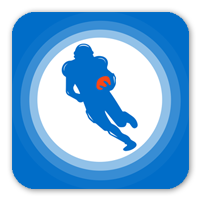McGrumble's fantasy football breakdown of committee backfields for the Cowboys, Bears, Patriots, and Jaguars. His draft advice and analysis for running backs in 2025.
With drafters getting smarter every year, trend-breaking strategies that felt like well-kept, league-winning secrets just a few short years ago can now seem commonplace. At the same time, it's important to always be ready to zag as soon as the rest of your league starts zigging -- or zig once more as zagging becomes the rage -- it's more important to understand why these strategies work, which ones are evergreen, and how to apply them to your own draft.
One such example has become so prevalent that it's begun to mutate as it spreads, with the Zero RB strategy spawning the Hero RB strategy, both of which are predicated on the idea of loading up on wide receivers in the middle rounds of your draft and avoiding the dreaded running back dead zone. As these strategies become the norm, it's more important now than ever to understand that not all late-round running backs are created equally.
Sometimes we know the player, we know the situation, and we know it isn't meant to be. But there could also be extenuating circumstances at play, and the late-round backs we should target are those whose doubts stem primarily from uncertainty. Perhaps a new coach brings in his own guys through free agency or the draft. Or maybe a veteran running back is returning from injury, looking to reclaim a lead role. With very few NFL teams relying on a single bell-cow back, situations become murky, and we're tasked with parsing through these ambiguous backfields to figure out which late-round backs will outperform their ADP.
Be sure to check all of our fantasy football rankings for 2025:- 2025 fantasy football rankings
- Running back (RB) fantasy football rankings
- Wide receiver (WR) fantasy football rankings
- Tight end (TE) fantasy football rankings
- Quarterback (QB) fantasy football rankings
- FLEX fantasy football rankings
- Defense (D/ST) fantasy football rankings
- Kicker (K) fantasy football rankings
- Dynasty fantasy football rankings
Dallas Cowboys
Javonte Williams: RB46, ADP 106 vs. Jaydon Blue: RB67, ADP 133 vs. Miles Sanders RB77, ADP 244:
The Dallas Cowboys' backfield has all the makings of a fantasy migraine -- three players, no defined roles, and an offensive coaching staff all stepping into new positions. After parting ways with surrogate starter Rico Dowdle, the Cowboys brought in veteran castoffs Javonte Williams and Miles Sanders on low-money deals, then spent a day three pick on Texas running back Jaydon Blue — the team-building equivalent of throwing spaghetti at the wall.
Williams is the presumptive front-runner. He's the highest-paid running back on the roster, and just three years ago, he was being drafted as a top-5 fantasy back after a rookie season that showcased elite tackle-breaking ability and three-down upside. However, he has yet to regain even a fraction of his trademark contact balance or lateral agility since suffering the brutal multi-ligament injury that derailed his sophomore season.
Even while playing in 33 of a possible 34 games over the last two seasons, he has yet to crack 100 rushing yards once since his return, and he closed 2024 by ceding touches to Jaleel McLaughlin and Audric Estime. The Cowboys were willing to give him a second chance, but on a one-year deal with minimal guarantees, the plug could be pulled early if he can't prove that he's more than a shell of his former self.
Meanwhile, Blue is the unknown that almost resembles a ray of hope if you squint just right. The former four-star recruit wasn't given many opportunities to shine, playing behind Bijan Robinson and then Jonathon Brooks at Texas. Still, he started to show flashes late in his career. Blue plays with an easy smoothness that leaps off the screen, particularly when working in space.
He possesses the type of light-on-his-feet suddenness that Tony Pollard was able to utilize to great success in this same system, back when now-head coach Brian Schottenheimer was a coaching analyst and then offensive coordinator. Reports out of minicamp have been cautiously optimistic, and considering where he's going in drafts, it won't take much of a meaningful role to return value.
If he can earn third-down work or emerge as the hot hand in an early-season rotation, he has the speed and talent to make some noise.
"He could be an unsung guy that we end up talking about a lot as one of these rookie running backs by the end of the season."@mspears96 has high expectations for Jaydon Blue's rookie season with the Dallas Cowboys 👀 pic.twitter.com/79dzTk97RS
— NFL on ESPN (@ESPNNFL) June 26, 2025
Then there's Sanders, who somehow just turned 28. After a promising start to his career, things have cratered for Sanders, most notably in his last two seasons in Carolina, where he had as many fumbles as touchdowns and, at times, looked allergic to contact. Signed to an even lower value one-year contract than Williams, this may be his last chance to prove he still belongs on an NFL roster.
But in a backfield this muddy, Sanders may have what it takes to crawl through it. He has experience in a variety of schemes, and he's the only back on the roster to have ever handled a full season's worth of bell-cow touches. It's doubtful he'll see that sort of volume again, but if he can earn the trust of his new coaching staff, it's not hard to imagine the grizzled vet getting some early-down scripts or even vulturing a red-zone look or two.
If injury strikes or Williams is saddled by ineffectiveness, someone like Sanders can certainly linger.
Actionable advice: The smart play is to throw a dart at Blue, knowing you can reevaluate after Week 1. It's also worth monitoring Williams throughout minicamp and preseason to see how much burst has returned in year three post-surgery. Someone in this backfield is going to see 12+ touches a game, and while it might not always be pretty, if you're taking shots at running backs this late in the draft, you can let your wide receivers worry about being pretty.
All your backs need to be relevant.
New England Patriots
TreVeyon Henderson: RB26, ADP 72 vs. Rhamondre Stevenson: RB34, ADP 107 vs. Antonio Gibson: RB52, ADP 273
For most of Bill Belichick's storied run in New England, the Patriots' backfield was a fantasy house of horrors. You could occasionally poke your head in and see something intriguing, but clever drafters knew to back away slowly.
Now, after the second coaching change in as many years, this time with a full house cleaning from top to bottom, and an offense-focused draft, the fog hasn't exactly lifted, but some of these monsters might finally be on your side.
TreVeyon Henderson enters as the shiny new piece, selected early in the second round and immediately injected with feature-back hope. Henderson brings legitimate big-play ability to an offense desperate for it, with a career average of 6.4 yards per carry at Ohio State and verified breakaway speed. He's been one of the most talked-about running backs in a loaded rookie class, but his path to immediate dominance might be bumpier than some think.
Josh McDaniels, returning for his third stint as offensive coordinator in Foxborough, has long been reluctant to hand his rookie running backs a substantial early workload, especially those profiled for passing down work.
Both Shane Vereen (second round, 2011) and James White (fourth round, 2014) essentially redshirted their rookie seasons, and while the famously error-phobic Belichick might have had a say in those decisions, let's not forget that new head coach Mike Vrabel was also hesitant to remove a second-round running back of his own from his original packaging, slow-rolling the great Derrick Henry’s development and keeping him on the shelf for much of his first year in favor of DeMarco Murray.
Granted, Henderson is already a better pass protector than any of these backs were as rookies, and the unquestioned most significant change to McDaniels' approach is that he no longer has the greatest quarterback of all time to lean on. To keep his second-year quarterback, Drake Maye, in positive game scripts, the Patriots will have to run the ball early and often.
Henderson will ultimately be the one to see the bulk of the carries, but if you're drafting him as if that's already the case, you may be disappointed.
Stevenson, for now, stands in the way. One of the first acts of Jerod Mayo's one-year tenure was to hand Stevenson a four-year extension. While his first season on the new deal went about as well as everything else in the short-lived Mayo era, he wasn't nearly as bad as his raw numbers would indicate.
His seven fumbles were the most by any non-quarterback in 2024, and Vrabel will not tolerate that sort of carelessness with the ball. Many of those fumbles, though, were the result of trying to do too much to overcome the deficiencies of his offensive line. It can not be overstated how bad the Patriots' offensive line was last year, with their most common starting group comprised of 60% of players who did not make an NFL roster out of training camp.
Stevenson was usually in a battle from the moment he received the handoff, with over 75% of his 801 rushing yards coming after initial contact. The Patriots used the fourth overall pick in the draft on tackle Will Campbell. They also hope to have former first-rounder Cole Strange back from injury, and they acquired yet another former first-rounder through free agency in Garrett Bradbury, as well as 11-year veteran Morgan Moses, to go along with their most competent returning starter, Mike Onwenu.
While they may not yet boast a top-ten unit, anything approaching league average will be a monumental step forward and a great benefit to whoever is running behind them. With a noticeably trimmed-down Stevenson presumed to be first in line, he appears motivated to hold onto the job in a way that he couldn't with the ball last season.
#Patriots RB Rhamondre Stevenson looks noticeably slimmer heading into his fifth season — Stevenson was listed at 227 pounds last season.
Excited to see what he can do! pic.twitter.com/7uGHAOMDq6
— Carlos A. Lopez (@LosTalksPats) June 27, 2025
Antonio Gibson, meanwhile, has become a fantasy afterthought in the New England backfield, but he was quietly a bit of a beast last year. His 3.91 yards after contact trailed only Bucky Irving amongst backs with at least 100 carries, and only Kenneth Walker III forced more missed tackles per attempt.
His 206 receiving yards were the lowest of his career, but his 1.26 yards per route run was still highly respectable for the running back position and right in line with his career average. While he's certainly the easiest of the three to overlook, the final Super Bowl run of the Patriots' Brady/Belichick era was reached on the backs of a three-man running back committee, with McDaniels successfully riding his between-the-tackles grinder (Sony Michel), his pass-game technician (James White), and his sort of do-it-all hybrid of the two (Rex Burkhead).
If that sounds familiar, and McDaniels plans to dust off that blueprint for 2025, the pieces are already in place. If Gibson can put his own spin on that Burkhead role, he will hold plenty of fantasy value during bye weeks and as an injury replacement throughout the year.
Actionable advice: Despite what the draft board is currently telling us, this is not the easiest backfield to call your shot on, and that's entirely by design. McDaniels has always tailored his approach week to week, which means that even if you're right on the depth chart, you may still be wrong on the game plan.
But there's an opportunity to be had here, and for a Mike Vrabel-led team that's favored in over half their games, there will be a high volume of carries to go around.
Henderson is the swing-for-the-fences pick, but early returns may require patience. Stevenson will hold an early-down role as long as he stays healthy, and Gibson is the forgotten wildcard who could easily play his way into relevance in any given week. All three are priced affordably, and in best-ball formats, especially, each one projects a few spike weeks that could more than return value.
While the house is still shrouded in fog, some of the lights have been turned back on, and this might be the year to take a cautious step back inside.
Jacksonville Jaguars
Travis Etienne Jr: RB36, ADP 96 vs. Tank Bigsby: RB40, ADP 126 vs. Bhayshul Tuten: RB56, ADP 136
Had the Jacksonville Jaguars' situation not changed at all since last season, things would already be confusing. After both seeing 12 carries in a Week 1 matchup against the Dolphins, Travis Etienne Jr. out-touched Tank Bigsby in every game from Week 2 to Week 4.
Then Bigsby was given more work in each game from Weeks 5 through 9 before the bulk of the carries became Etienne's again in every game from Week 10 to Week 13, only for them to bounce the lead role back and forth for the last month-plus of the season. Got all of that?
Now think about the fact that a brand new front office and coaching staff just spent two of the team's nine draft picks on running backs, including Virginia Tech speedster Bhayshul Tuten in the fourth round.
At this time last year, Etienne was a consensus RB1 after a top-10 fantasy finish that many were correct to question, his 3.8 yards per carry average being heavily propped up by his 11 touchdowns, six of them coming in a three-week stretch early in the year. So when the touchdowns dried up, and all that was left was his sub-four yards per carry, now on only 150 carries, Etienne put himself squarely in the conversation for fantasy bust of the year.
He still offers home run potential, and his receiving ability gives him a solid floor when the game script breaks right, but he is entering the final year of his rookie contract, and new head coach Liam Coen comes from a McVay coaching tree that isn't exactly known for making its RB1 untouchable.
There are also suddenly a lot of very hungry mouths to feed in the Jaguars' passing game, with the emergence of breakout rookie Brian Thomas Jr. and the drafting of Travis Hunter, who will almost assuredly have a package of plays designed to put the ball in the hands of the team's most unique playmaker.
While it would be silly to assume a Coen-led offense not involving its backs in the passing game, after seeing 120 targets go to Tampa Bay's running backs last season, the cleanest path back to fantasy relevance may lie in simply being more efficient on the ground, not something Etienne has consistently delivered.
Then there's Bigsby, who enters his third season as one of the most polarizing players in fantasy football. Depending on which game you watched, he was either a decisive downhill runner or a complete liability, while the truth is probably somewhere in the middle. His rookie season was ugly, averaging 2.6 yards per carry and struggling to find the field on third downs due to his dangerously inept pass blocking and low situational awareness.
While his pass protection has yet to show signs of improvement, year two saw him gain the trust of his previous coaching staff in other ways, earning 168 carries to Etienne's 150 and outgaining his teammate 766 to 558 yards on the ground. If Bigsby can adapt to Coen and new offensive coordinator Grant Udinski's system more easily than he did last year, he could continue to carve out a larger role, particularly on early downs and near the goal line.
The most interesting back in Jacksonville, however, might be the rookie Tuten. After transferring from North Carolina A&T to Virginia Tech in 2023, Tuten put up two excellent collegiate campaigns against a higher level of competition, showcasing excellent burst, balance, and natural hands in the screen game.
His 4.32-second 40-yard dash at the Combine was the fastest amongst this class of running backs, and as a fourth-round pick, he's a player that this new regime actively targeted. At 5-foot-9 and 206 pounds, he profiles as a faster Irving, who Coen expertly turned into a fantasy darling after his own fourth-round selection by the Buccaneers last season.
Tuten's biggest issue is ball security, with nine fumbles over his two seasons at Virginia Tech and reports that he put the ball on the ground on his very first touch at rookie minicamp, but if he's able to protect the ball and gain his coaches' trust, there isn't a more explosive option in the Jaguars' backfield.
Actionable advice: With Etienne and Bigsby flip-flopping roles all season long, and neither finding great fantasy success in the process, the temptation might be to go with the new option in Tuten, and what's so bad about giving in to temptation from time to time?
Currently priced at RB56, he's precisely the type of apple worth biting into. Because when the devils you know have combined for 3.9 yards per carry over the last two seasons, it might be time to dance with the Duval devil you don't.
Chicago Bears
D'Andre Swift: RB30, ADP 78 vs. Roschon Johnson: RB60, ADP 181 vs. Kyle Monangai: RB80, ADP 221
If you were expecting the Bears to dramatically overhaul their backfield this offseason, you weren't alone. Rumors swirled post-draft that they were all in on Henderson, only to see him nabbed by the Patriots one spot before their selection in the second round. After that, Chicago essentially shrugged and walked away with Kyle Monangai in the seventh round, a move that felt less like a statement and more like a placeholder.
The result is a backfield with some familiar names, unclear roles, and more intrigue than the ADPs would suggest.
D'Andre Swift enters the season as the presumed starter after signing a three-year deal last offseason and becoming one of the first free agents off the board. He's coming off a perfectly acceptable season, where he volumed his way to almost 1,000 yards on the ground and added another 386 in the passing game.
Now he reunites with new Bears head coach Ben Johnson, but that may not be a positive. Johnson was the offensive coordinator in Detroit during the latter phase of Swift's tenure there, when frustrations with his consistency, health, and running style led to him being relegated to a rotational role behind Jamaal Williams.
Swift will get the first crack at lead duties in Chicago, but it's worth wondering how short the leash might be, especially if he picks up where he left off as more of a space player than a volume back.
Johnson is a bit of an X-factor and, quite possibly, the unheralded archetype that coach Johnson's offense is built around. In Detroit, Johnson famously gave a steady diet of early-down work to David Montgomery and the aforementioned better-personality-than-player Williams, who seemingly came out of nowhere to lead the league with 17 rushing touchdowns in 2022.
He's shown no hesitation to lean on his grinders and use his explosive backs more situationally, and Roschon fits the mold of a reliable, physical back who can hold up in pass protection. While Johnson was woefully inefficient in his second season, averaging 2.7 yards per attempt on limited carries, some of his inefficiency can be excused when considering that, on average, he was first contacted only 0.63 yards beyond the line of scrimmage, or about the length of a standard baguette, for the select few who prefer their running lanes measured in bread.
An obvious early priority of the Johnson regime was to improve the offensive line, which he has addressed aggressively by acquiring Joe Thuney and Jonah Jackson via trades, Drew Dalman through free agency, and Ozzy Trapilo in the second round of the draft, thereby completely overhauling the unit. If Johnson is given just a moderate amount of space to get up to speed, he may check enough boxes to handle a more significant early-down role.
Albert Breer discussing #Bears RB Roschon Johnson’s potential role in Ben Johnson’s offense:
“I think he (Ben) gives Roschon Johnson a shot to win a legit role in the offense.” pic.twitter.com/cwf9wIYvwU
— Chicago Bears Network (@bearsnetwork_) May 28, 2025
As a seventh-round pick, Monangai is the least likely Bears running back to make an early impact, but he's also the only addition to the position since Johnson took the job. He led the Big Ten in rushing last year at Rutgers, churning his way to 1,279 yards on the ground. He isn't flashy, but he runs hard, stays on schedule, and doesn't do anything to get himself benched, finishing his collegiate career with zero fumbles on 706 touches.
If Swift falters or Johnson misses time, Monangai could play himself into a short-yardage role simply by showing up and doing what's asked. He's not a stash in shallower leagues, but in 20-round best-ball formats, a case could be made for him to enter into the late-round conversation.
Actionable advice: Swift will likely start the year on top, but we've seen this coaching staff fade him before. At the cost of practically nothing, Johnson represents the best bang for your buck. In most offenses, doing the dirty work is a good way to get an attaboy and a pat on the butt. In a Ben Johnson offense, doing the dirty work could lead to a who-saw-that-coming double-digit touchdown season.
If Johnson's system delivers the same kind of structure and red zone volume it did in Detroit, someone in the Chicago backfield is going to be fantasy-relevant, and if you're able to land that someone with the last pick of your draft, you'll be the toast of your league. Sorry, one more for those bread enthusiasts out there.
Download Our Free News & Alerts Mobile App
Like what you see? Download our updated fantasy football app for iPhone and Android with 24x7 player news, injury alerts, rankings, starts/sits & more. All free!






 RADIO
RADIO
























